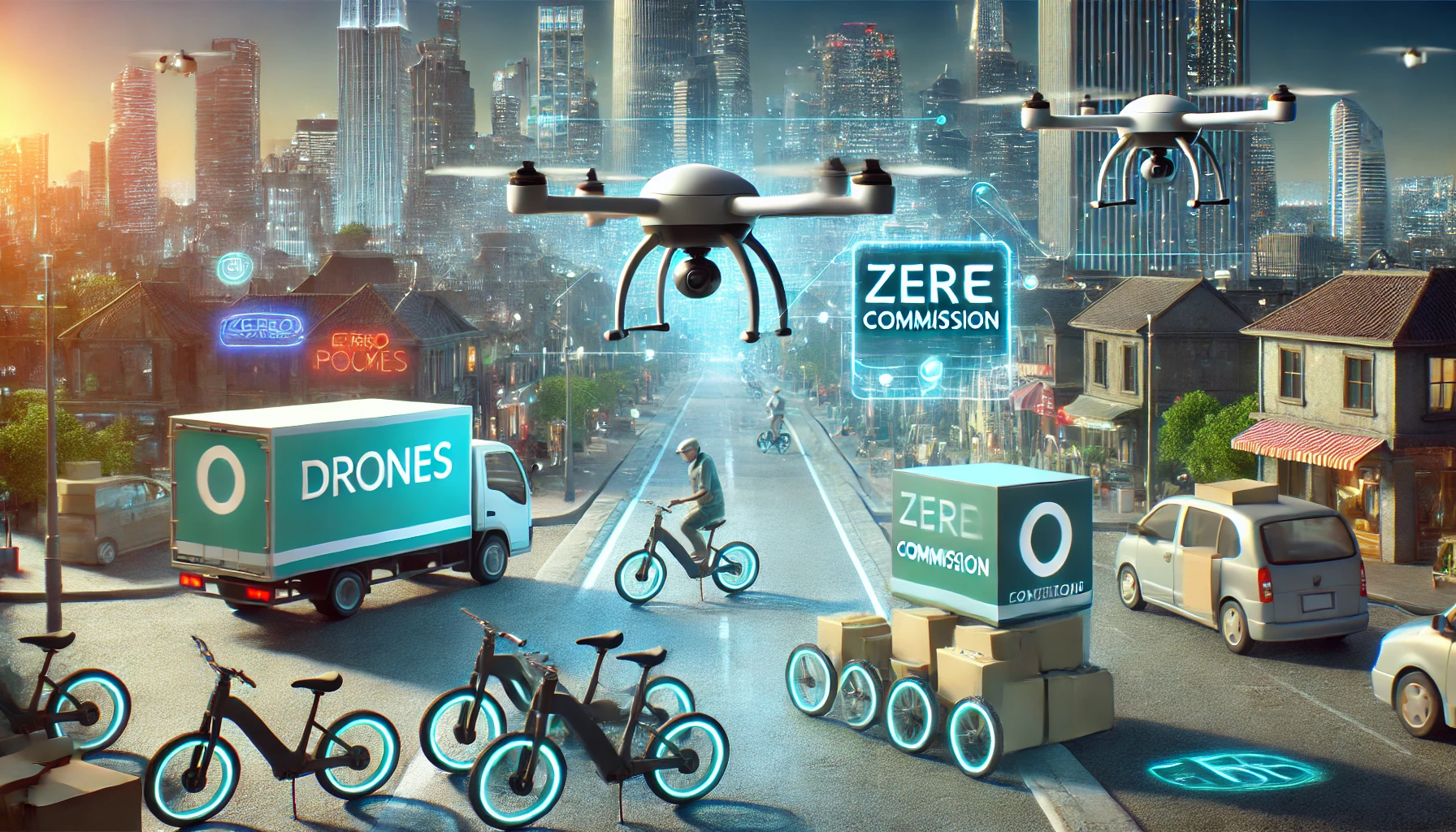Introduction
The food and retail delivery industry has witnessed a major transformation in recent years. With the rise of third-party platforms like Uber Eats, Deliveroo, and DoorDash, businesses have struggled with hefty commission fees, often cutting deep into their profit margins. However, a new trend is emerging that challenges this outdated system: zero-commission delivery models.
Zero-commission delivery is gaining traction as restaurants, local retailers, and service providers look for a more sustainable, cost-effective alternative to traditional delivery platforms. This article explores why zero-commission models are the future of delivery, how they benefit both businesses and consumers, and how they can be successfully implemented.
Understanding the Traditional Commission-Based Model
Most third-party delivery platforms operate on a commission-based model, charging businesses anywhere from 15% to 40% per order. While these platforms provide exposure and convenience, the high costs often make it unsustainable for small businesses. Here are some of the major drawbacks:
- High Commission Fees: Restaurants and retailers lose a significant portion of their revenue to delivery apps.
- Limited Profitability: Businesses often have to increase prices to offset commission fees, making them less competitive.
- Loss of Customer Data: Many third-party platforms do not share customer data, making it difficult for businesses to build direct relationships with their customers.
- Lack of Control: Businesses have little say over the delivery experience, which can lead to inconsistent service and customer dissatisfaction.
Given these challenges, the demand for an alternative has never been greater. This is where zero-commission models come in.
What is a Zero-Commission Delivery Model?
A zero-commission delivery model allows businesses to offer delivery services without paying a percentage of each sale to a third-party platform. Instead, these models often work through:
- Subscription-Based Services: Businesses pay a flat monthly fee rather than per-order commissions.
- Delivery Fee-Paid by Customers: Customers cover the delivery cost instead of businesses losing a percentage of their revenue.
- Direct-to-Customer Platforms: Businesses use their own websites and apps to take orders, eliminating the need for third-party intermediaries.
- Partnered Local Drivers: Instead of relying on gig economy workers from big platforms, businesses collaborate with independent couriers or logistics partners.
By adopting a zero-commission model, businesses can take back control over their pricing, customer data, and delivery operations.
Benefits of Zero-Commission Delivery Models
1. Higher Profit Margins for Businesses
One of the biggest advantages of eliminating commission fees is increased profitability. By removing the 15-40% commission per order, businesses retain more revenue, allowing them to reinvest in better ingredients, improved services, or marketing efforts.
2. Lower Prices for Consumers
When businesses don’t have to inflate prices to cover commission fees, customers benefit from more affordable menu prices. This makes dining out or ordering in more accessible and encourages repeat purchases.
3. Better Customer Relationships
Traditional delivery platforms act as middlemen, often restricting access to customer data. A zero-commission model allows businesses to collect customer information, enabling them to offer personalized promotions, loyalty programs, and better service.
4. Greater Control Over Delivery Experience
With third-party apps, businesses have little say over delivery times, packaging quality, or customer service. A zero-commission approach allows businesses to select their own delivery partners or even manage in-house fleets, ensuring higher service quality and brand consistency.
5. Enhanced Local Economy Support
By working directly with local couriers or partnering with community-driven delivery services, businesses keep money within the local economy instead of paying fees to multinational corporations.
6. Flexibility in Pricing and Promotions
Commission-based platforms often restrict how businesses can price their products or run promotions. With a zero-commission model, businesses have the freedom to offer discounts, bundle deals, and incentives without interference.
How to Transition to a Zero-Commission Delivery Model
Adopting a zero-commission delivery strategy requires careful planning and execution. Here’s how businesses can make a smooth transition:
1. Build a Direct Ordering System
Businesses should create their own ordering platforms, whether through a dedicated website, mobile app, or even social media integrations. Many cost-effective solutions exist, such as Shopify for e-commerce or Toast for restaurants.
2. Use White-Label Delivery Services
White-label delivery services allow businesses to provide delivery under their own brand while using third-party logistics partners for fulfillment. Companies like OrderFor, Vromo, and Bringg offer such solutions.
3. Develop a Subscription Model
Instead of commissions, businesses can offer a subscription-based delivery service where customers pay a small monthly fee for unlimited or discounted deliveries. Amazon Prime and Walmart+ have successfully implemented this strategy.
4. Partner with Local Couriers
Instead of relying on gig workers from major platforms, businesses can work directly with local courier companies or independent drivers, ensuring better service reliability and local job support.
5. Offer In-Store Pickup & Curbside Options
Encouraging customers to order directly and pick up their meals or products is another way to bypass high commission fees. Many businesses have successfully implemented curbside pickup strategies.
6. Market the Benefits to Customers
To drive adoption, businesses must educate their customers on why ordering directly from them is better. Messaging should emphasize lower prices, better service, and the support of local businesses.
The Future of Zero-Commission Models
The rise of zero-commission delivery models isn’t just a passing trend—it’s the future of sustainable, fair, and customer-friendly delivery services. As more businesses realize the long-term benefits of eliminating high commission fees, we can expect:
- More Local and Regional Delivery Networks: Independent logistics networks tailored to specific areas will replace one-size-fits-all third-party platforms.
- Stronger Customer Loyalty: Businesses that own their customer relationships will thrive by providing personalized experiences.
- Greater Profitability for Small Businesses: Restaurants and retailers will no longer have to choose between visibility and profit margins.
- Increased Consumer Awareness: More customers will actively choose businesses that support fair pricing and sustainable practices.
Conclusion
The shift to zero-commission delivery is inevitable as businesses and consumers demand more transparency, affordability, and control. While third-party platforms have dominated the market for years, the future belongs to retailers and restaurants that embrace direct, commission-free solutions.
By transitioning to a zero-commission model, businesses not only increase their profitability but also build stronger customer relationships and enhance overall brand loyalty. Whether through direct ordering platforms, local courier partnerships, or subscription-based delivery, the opportunities for innovation are limitless.
For businesses looking to break free from excessive commission fees, now is the time to act. The future of delivery is zero-commission, and those who adapt early will reap the rewards.


